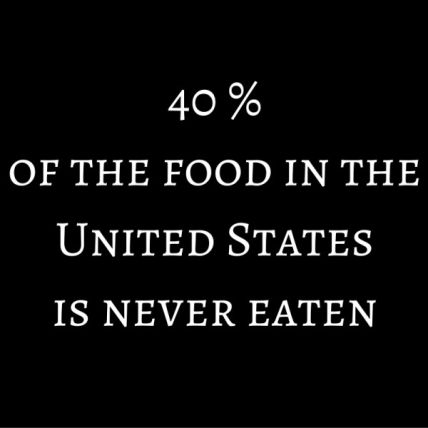
Some take advantage of how much food they actually can put on the plate. Food waste is becoming more and more of a problem in grocery stores, restaurants and the homes of Americans.
According to a report from the Natural Resources Defense Council, 40 percent of food in the United States is never eaten. Around $165 billion is wasted each year. 20 pounds of food is wasted each month for 311 million Americans, amounting to $1,350 to $2,275 annually in waste for a family of four.
With the amount of food waste every year, studies show we have enough food and resources to feed everyone in the world.
At the end of the day, grocery stores throw away produce and meat and anything that would not sell even if it is in good condition. People tend to go for the “perfect tomato,” than ones that are a little different looking causing the grocery store to throw not-so-perfect foods away.
Mikaela Krish, a supermarket employee, feels saddened when she has to throw away perfectly good food.
“At my store, they usually dispose of fruits and vegetables that looks fine to me,”Krish said. “I guess it is a liability if people get sick from the food sold in the store so they throw it away if it has bruises on it or does not look like it will get sold on the shelf.”
Krish personally does not pick out the best looking fruit when she goes grocery shopping because she knows they will just get thrown out that day and she does not like the idea of wasting so much food.
“We throw out meat each day that has not even reached its expiration day yet and it is a real shame to see it thrown out knowing that their are people starving in the world,” Krish said.
If grocery stores donated the food that was still good for human consumption and did not throw it away, it would help eliminate the high amount of food that is wasted.
Food waste is even a big concern even in hospitals. Colin Moran, executive chef of the pavilion at the University of Pennsylvania Hospital, has to see food being thrown out constantly.
“Food waste is contained to scraps that are produced while prepping the vegetables and proteins before cooking and over production for the patients and the cafeteria needs,” Moran said.

Although they work closely with a program called Trim Trax that allows them to see what they are wasting by tracking waste in trim or overproduction, they still have not been able to fully get rid of wasting certain foods.
In restaurants, food is wasted every time someone is not happy with their order. For example, if food is made for an order and then the customer does not want it, the restaurant will throw the untouched order in the trash.
Sheana Schneidereit has been a waitress for two years. She also has similar experiences with throwing away perfectly good plates of delicious food.
“Aside from the customers not completing meals or taking it home, food can be left out or prepared in too large of numbers where it goes bad,” Schneidereit said.
“On all you can eat wing nights, enormous amounts of food are wasted especially because many restaurants do not allow customers to take home extra,” Schneidereit said.
Schneidereit personally does not waste food herself but can not control what her co-workers decide.
“If it is clearly unopened or untouched I will not throw it away. Often we try to reuse messed up orders that have not been at the table yet,” Schneidereit said. “However, many people do throw away extras or orders that have been messed up because of laziness.”
Schneidereit has witnessed many people return food because of poor appearance or condition and wishes people would not throw away so much food. Her managers do, however, offer the food to the employees to take home before throwing meals away.
For every 1,000 in revenue grocery stores generate, 10lbs of waste is created. After the food is unsold, it is diverted. 23.3 percent feeds hungry families, 26.2 percent becomes Animal feed, 24.6 percent becomes composted and 10.3% is made into bio fuel, according to the Grocery Manufactures Association.
Food waste is a big part of why the food gap has not yet been closed. If grocery stores, restaurants and households stop throwing away so much food, it could be steps closer to closing the food gap in the world.


